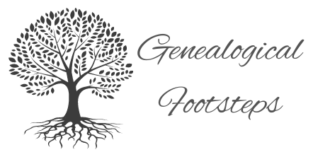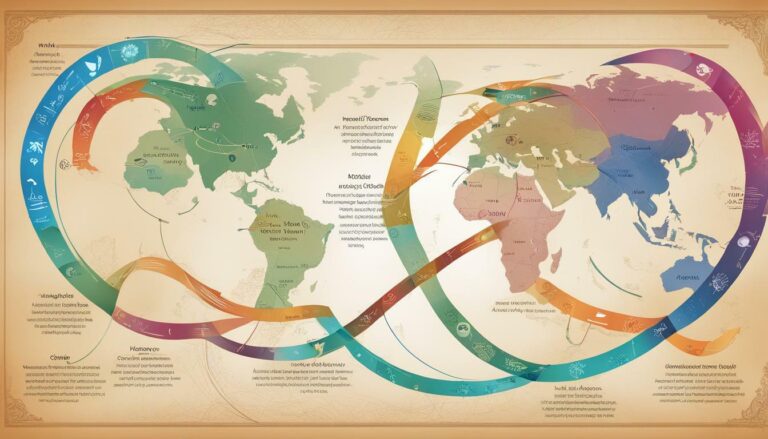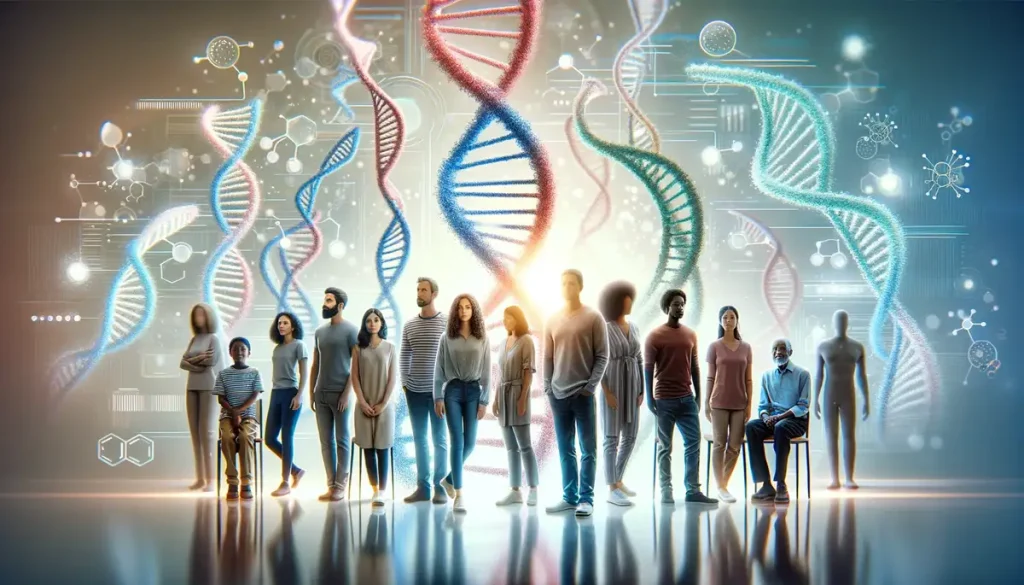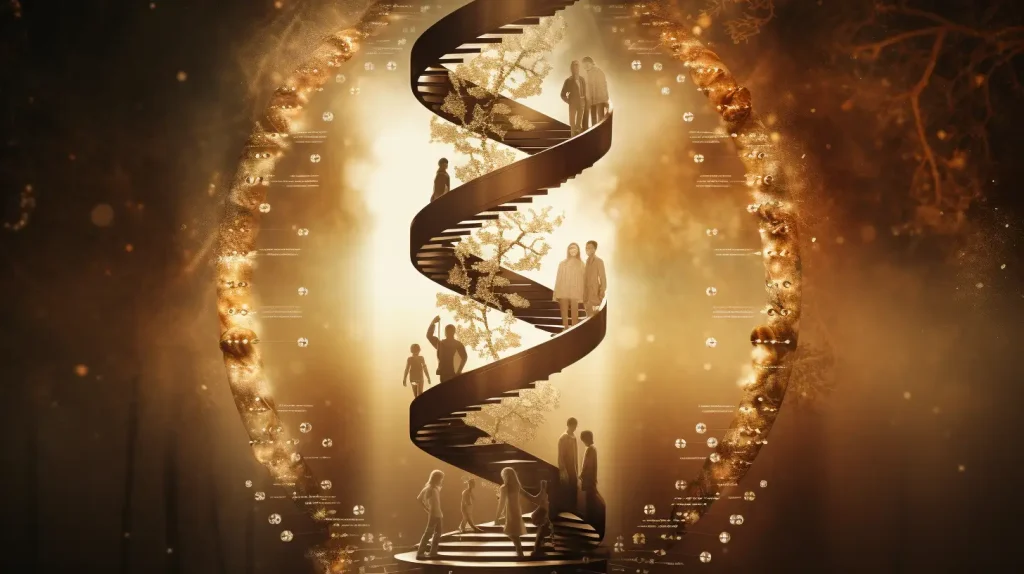Haplogroups are genetic populations defined by specific inherited mutations in either mitochondrial DNA (passed maternally) or Y-chromosome DNA (passed paternally). Each haplogroup traces a common ancestor back to a specific time and place in history, offering insights into ancestral origins and migration patterns. Haplogroups are a fundamental component in the study of human evolution and are extensively used in genealogical DNA testing to provide deep ancestral lineage information.
Let’s look at this topic in more depth…
Have you ever wondered about your genetic past and where your ancestors came from? DNA haplogroups and deep ancestry can provide answers to these questions. By exploring your haplogroups, you can trace both maternal and paternal lineages and connect with distant relatives. Genetic genealogy and genetic ancestry testing have made it possible to uncover your ancestral roots and discover kinship connections you may not have known existed.
In this article, we will delve into the concept of DNA haplogroups and deep ancestry and explore their significance in understanding our genetic past. We will explain how haplogroup analysis is used to determine haplogroups, and the different types of genetic ancestry testing available. We will also delve into the ethical considerations surrounding DNA haplogroup testing.
What Are DNA Haplogroups?
DNA haplogroups are genetic lineages that can be traced back through generations to reveal deep ancestry. Haplogroup analysis involves examining specific genetic markers, known as single nucleotide polymorphisms (SNPs), to determine haplogroup classifications.
Haplogroups can provide insight into an individual’s ancestral origins, as well as the migratory patterns and interconnections of human populations over time. Understanding haplogroups is an important aspect of genetic genealogy and genetic ancestry testing, as it can help individuals to locate and identify distant relatives.
Paternal and Maternal Haplogroups
There are two main types of DNA haplogroups: paternal haplogroups and maternal haplogroups. Paternal haplogroups are traced through the Y-chromosome, which is passed down exclusively from father to son. Maternal haplogroups are traced through mitochondrial DNA (mtDNA), which is passed down from mother to both sons and daughters.
By examining the specific SNPs within an individual’s Y-chromosome or mtDNA, haplogroup analysis can identify the haplogroup classification for each lineage. This provides a deeper understanding of an individual’s paternal and maternal ancestry, respectively.
Significance of Haplogroup Analysis
Haplogroup analysis is a powerful tool for exploring deep ancestry and understanding human migration patterns. By examining SNPs within DNA, haplogroup analysis can provide insights into where an individual’s ancestors may have lived, how they migrated over time, and how they are related to other populations around the world.
For example, if an individual’s Y-chromosome haplogroup is R-M269, this suggests that their paternal lineage can be traced back to the ancient inhabitants of Western Europe, as the R-M269 haplogroup is most commonly found in this region. Similarly, if an individual’s mtDNA haplogroup is B4a1a1, this suggests that their maternal lineage can be traced back to the indigenous peoples of the Americas, as the B4a1a1 haplogroup is most commonly found in Native American populations.
Genetic Ancestry Testing: Uncovering the Past
Genetic ancestry testing provides a powerful tool for exploring deep ancestry and tracing kinship connections. This testing involves the analysis of DNA haplogroups, which are groups of people who share a common ancestor and similar genetic characteristics. By examining specific haplogroups, genetic ancestry testing can provide insight into one’s genetic heritage and ancestral roots.
There are different types of genetic ancestry tests available, including Y-chromosome DNA testing for paternal ancestry and mitochondrial DNA testing for maternal ancestry. Y-chromosome DNA testing detects genetic markers on the Y-chromosome, which is only passed down from fathers to their sons. This makes it a useful tool for tracing paternal lineages and identifying specific haplogroups. Mitochondrial DNA testing, on the other hand, examines genetic markers on mitochondrial DNA, which is passed down from mothers to both their daughters and sons. This makes it a valuable tool for tracing maternal lineages and identifying maternal haplogroups.
Understanding Paternal Ancestry through Y-Chromosome DNA Testing
Y-chromosome DNA testing is a valuable tool for understanding paternal ancestry. The Y-chromosome is passed down from father to son, allowing for the identification of specific haplogroups and the tracing of paternal lineages. By testing the Y-chromosome, individuals can gain insight into their paternal genetic history, learning more about their ancestral roots and kinship connections.
Y-chromosome DNA testing involves analysing specific markers on the Y-chromosome that are passed down from father to son. This allows for the identification of specific haplogroups, which can be used to trace paternal lineages through time and across geographic regions. By comparing Y-chromosome markers among individuals, it is possible to identify shared ancestry and distant kinship connections.
One of the key advantages of Y-chromosome DNA testing is its ability to distinguish between paternal and maternal ancestry. While mitochondrial DNA testing can provide insight into maternal ancestry, only Y-chromosome testing can reveal information about paternal lineages. This makes Y-chromosome testing a valuable tool for understanding one’s full genetic history.
When conducting Y-chromosome DNA testing, it is important to choose the right type of test. There are several different types of Y-DNA tests available, including STR and SNP testing. STR testing looks at specific markers on the Y-chromosome that are known to mutate frequently, allowing for close matches to be identified among paternal lineages. SNP testing, on the other hand, looks at specific genetic variants that are associated with specific haplogroups, allowing for a broad understanding of paternal ancestry.
Tracing Maternal Ancestry through Mitochondrial DNA Testing
Mitochondrial DNA testing is a type of genetic ancestry testing that can provide insight into maternal ancestry. Mitochondrial DNA is passed down from mother to child, regardless of gender, and can be used to trace maternal lineages.
Through mitochondrial DNA testing, individuals can identify their specific mitochondrial haplogroup. Haplogroups are genetic lineages that can be traced back to a common ancestor, allowing individuals to explore their deep ancestry and kinship connections.
One of the advantages of mitochondrial DNA testing is that it can be used to identify connections between individuals who share the same maternal haplogroup. This can be useful in uncovering previously unknown relatives and expanding one’s family tree.
It is important to note that mitochondrial DNA testing can only reveal information about maternal ancestry. To explore paternal lineage, individuals may need to undergo Y-chromosome DNA testing.
Deep Ancestry: Connecting with Distant Relatives
DNA haplogroups and deep ancestry can reveal surprising connections to distant relatives. Genetic genealogy involves comparing DNA results to identify genetic matches, allowing individuals to connect with biological relatives who share common ancestors.
By identifying shared haplogroups, genetic genealogy can uncover unexpected family connections and provide insight into ancestral origins. This process is particularly valuable for those who have limited knowledge of their family history or are searching for biological parents or siblings.
Through genetic genealogy, it is possible to identify living relatives who may not have been previously known. This can lead to the discovery of new family members, as well as the recovery of lost family stories and traditions.
The Significance of DNA Haplogroups in Anthropological Research
DNA haplogroups have become increasingly important in anthropological research due to their ability to shed light on ancient migration patterns, population genetics, and human evolution. Through haplogroup analysis, scientists can identify and track the movements of ancient populations, providing insights into the origins and spread of human populations across the globe.
Anthropological studies have shown that humans originated in Africa, with early human populations gradually spreading out across other continents over time. Haplogroup analysis has revealed that certain haplogroups are more prevalent in specific regions, providing evidence of migration patterns and population movements throughout history. For example, the presence of haplogroup R1b in Europe has been linked to the migration of Indo-European speakers into the region during the Bronze Age.
Additionally, DNA haplogroups can help researchers understand the genetic diversity and relationships between different human populations. By comparing haplogroups between groups, scientists can determine the extent to which populations have intermixed and identify patterns of genetic variation.
Ethical Considerations in DNA Haplogroup Testing
As with any form of genetic testing, there are important ethical considerations to be aware of when it comes to DNA haplogroup testing.
One of the main issues is obtaining informed consent from individuals who are being tested, particularly when it comes to the potential for sensitive information to be revealed. It’s important that individuals have a clear understanding of the purpose and implications of the test before consenting to it.
Another concern is privacy. Genetic information is highly personal, and there is a risk that it could be misused or shared without consent. It’s important that individuals take steps to protect their genetic information and only share it with trusted entities.
In some cases, DNA haplogroup testing could reveal unexpected or sensitive information, such as non-paternity events or predispositions to certain health conditions. It’s important that individuals are prepared for this possibility and have access to appropriate support and counselling.
Finally, there is a risk that genetic information could be used for discriminatory purposes, such as in employment or insurance decisions. It’s important that individuals are aware of their rights and protections under relevant laws and regulations.
What are Haplogroups – Conclusion
Overall, DNA haplogroups and deep ancestry provide fascinating insights into our genetic past and kinship connections. Through genetic genealogy and genetic ancestry testing, individuals can unlock a wealth of information about their ancestral roots, including both paternal and maternal lineages. By understanding their DNA haplogroups, individuals can connect with distant relatives and build a broader understanding of their family tree.
Additionally, DNA haplogroup analysis has wider implications for anthropological research, providing insights into ancient migration patterns, population genetics, and human evolution. However, as with any form of genetic testing, there are ethical considerations to be aware of, such as privacy and the potential misuse of genetic information. It is important for individuals to approach DNA testing with caution and consideration for themselves and others.
The study of DNA haplogroups and deep ancestry offers a powerful tool for self-discovery and a deeper understanding of human history. By exploring their own genetic makeup, individuals can uncover previously unknown connections to their past and contribute to a wider understanding of our shared ancestry.

My name is Anthony, the founder of Genealogical Footsteps. I have over 20 years of dedicated experience in family history and genealogy (although I am not a professional genealogist). I hold BA in history, and am considering further education (despite my age). My journey in genealogy has led me to remarkable discoveries and projects, particularly where my Cypriot genealogy is concerned. I am passionate about uncovering the stories behind names and have helped friends and family connect with their heritage, including those with Cypriot, Celtic, and Viking ancestry. Click here to read more about me.



